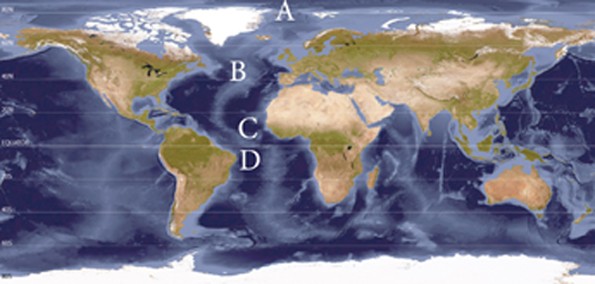The star nearest the Earth is
A. Polaris.
B. the Sun.
C. the Moon.
D. Alpha Centauri.
Answer: B
Environmental & Atmospheric Sciences
You might also like to view...
Explain why some lava flows cover large areas and others do not
What will be an ideal response?
Environmental & Atmospheric Sciences
Which of the following proteins has an extended helix secondary structure?
A) collagen B) keratin C) silk D) none of these
Environmental & Atmospheric Sciences
Which wind belt is located at letter D?
A. Southeast Trade Winds B. Westerlies C. Polar Easterlies D. Northeast Trade Winds
Environmental & Atmospheric Sciences
Where does the quartz in granite typically end up?
A. as small clay minerals that are deposited in lakes and the sea B. it ends up as sand in rivers, dunes, and beaches C. it is converted into feldspar and weathers into clays D. quartz does not weather and so it keeps the granite from weathering
Environmental & Atmospheric Sciences